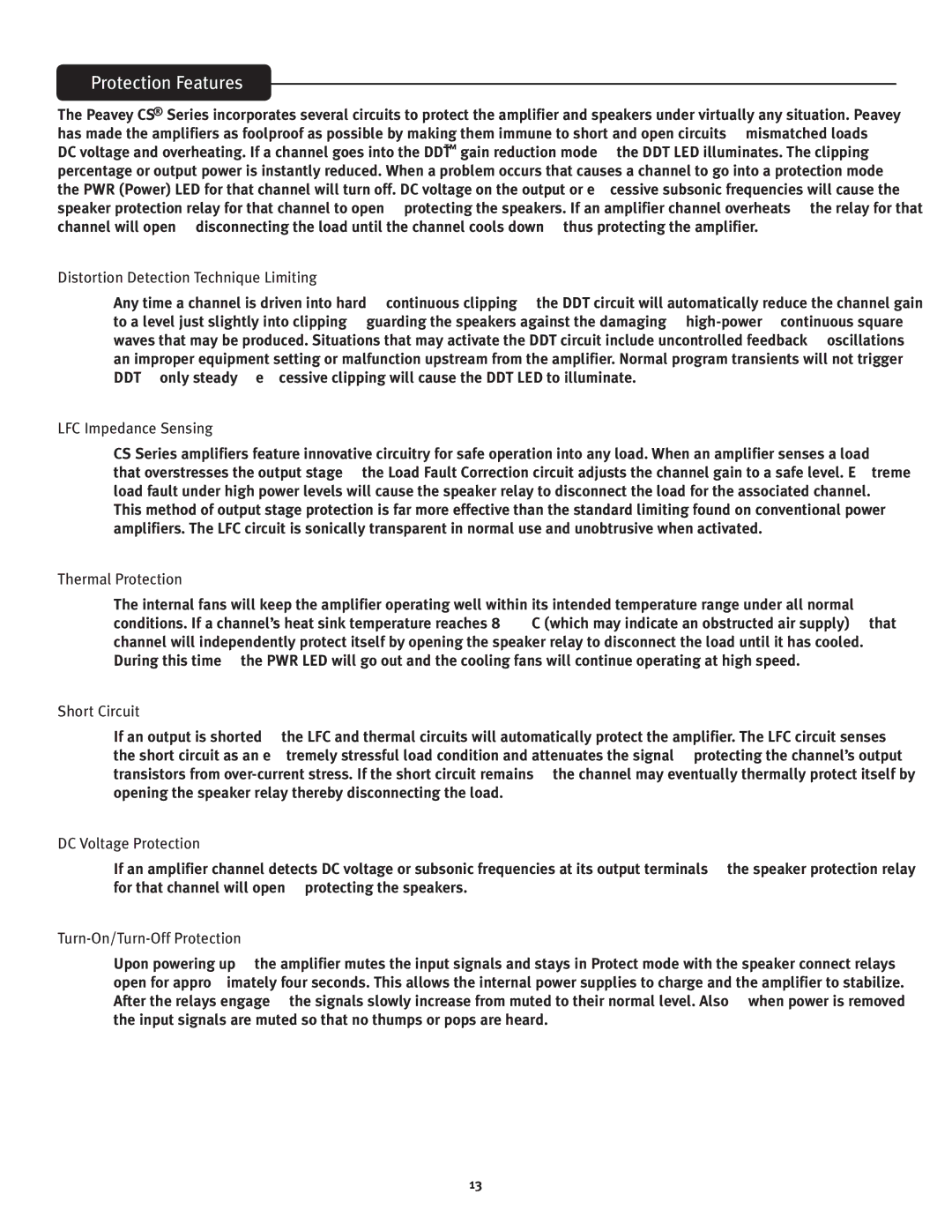CS 4080 HZ, CS 3000 specifications
The Peavey CS 3000 and CS 4080 HZ are powerhouse amplifiers designed for professional audio applications, catering to both musicians and sound engineers who require reliability and sonic excellence. These models are a part of Peavey's renowned CS series and offer a wide array of features and technologies to enhance performance and sound quality.The Peavey CS 3000 delivers a robust performance with a power output of 2,400 watts at 4 ohms. This amplifier is particularly favored for its ability to handle demanding workloads while maintaining clarity and precision in sound reproduction. One of the standout features of the CS 3000 is its patented Peavey DDT (Distortion Detection Technique) compression, which automatically engages when the amplifier approaches its limits. This technology helps prevent clipping, ensuring a cleaner sound even at high volumes, making it ideal for live sound applications.
The CS 4080 HZ, on the other hand, is designed for high-frequency applications, providing 4,000 watts of output. This model features advanced circuitry that enhances its performance when powering high-impedance loads. Users will appreciate the built-in crossover networks that allow for precise tuning and integration with various sound systems, making it suitable for both bi-amp and full-range applications.
Both amplifiers feature Peavey's proprietary Turbosound speaker connections, which ensure a secure and efficient signal transfer, reducing the chances of interference or signal loss during use. The rugged chassis and heat management system are engineered for optimal airflow, preventing overheating during long sessions or extensive use, which is crucial in live sound settings.
Moreover, the CS 3000 and CS 4080 HZ incorporate comprehensive protection circuitry. This not only safeguards the amplifiers from damage due to overheating or short-circuit conditions but also extends the longevity of the units. The simple front-panel controls and status indicators allow users to easily monitor performance, making adjustments quickly as needed.
In summary, the Peavey CS 3000 and CS 4080 HZ stand out for their exceptional power, innovative technology, and durability. These amplifiers are engineered to meet the rigorous demands of professional audio environments, providing reliable performance for musicians, DJs, and sound technicians alike. Whether you're setting up for a concert or managing an event, these amplifiers prove to be indispensable tools for achieving high-quality audio experiences.
